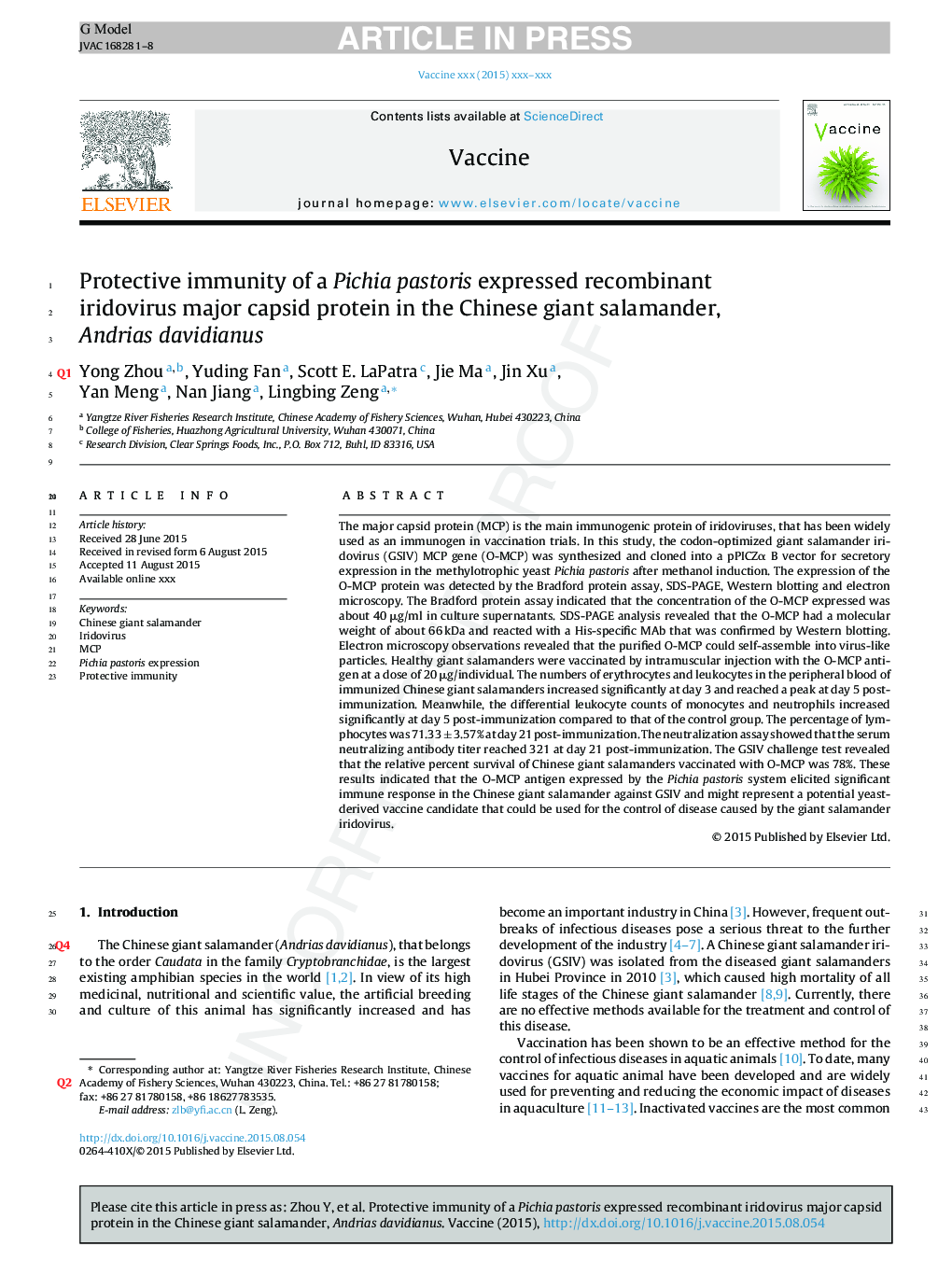| Article ID | Journal | Published Year | Pages | File Type |
|---|---|---|---|---|
| 10963969 | Vaccine | 2015 | 8 Pages |
Abstract
The major capsid protein (MCP) is the main immunogenic protein of iridoviruses, that has been widely used as an immunogen in vaccination trials. In this study, the codon-optimized giant salamander iridovirus (GSIV) MCP gene (O-MCP) was synthesized and cloned into a pPICZα B vector for secretory expression in the methylotrophic yeast Pichia pastoris after methanol induction. The expression of the O-MCP protein was detected by the Bradford protein assay, SDS-PAGE, Western blotting and electron microscopy. The Bradford protein assay indicated that the concentration of the O-MCP expressed was about 40 μg/ml in culture supernatants. SDS-PAGE analysis revealed that the O-MCP had a molecular weight of about 66 kDa and reacted with a His-specific MAb that was confirmed by Western blotting. Electron microscopy observations revealed that the purified O-MCP could self-assemble into virus-like particles. Healthy giant salamanders were vaccinated by intramuscular injection with the O-MCP antigen at a dose of 20 μg/individual. The numbers of erythrocytes and leukocytes in the peripheral blood of immunized Chinese giant salamanders increased significantly at day 3 and reached a peak at day 5 post-immunization. Meanwhile, the differential leukocyte counts of monocytes and neutrophils increased significantly at day 5 post-immunization compared to that of the control group. The percentage of lymphocytes was 71.33 ± 3.57% at day 21 post-immunization. The neutralization assay showed that the serum neutralizing antibody titer reached 321 at day 21 post-immunization. The GSIV challenge test revealed that the relative percent survival of Chinese giant salamanders vaccinated with O-MCP was 78%. These results indicated that the O-MCP antigen expressed by the Pichia pastoris system elicited significant immune response in the Chinese giant salamander against GSIV and might represent a potential yeast-derived vaccine candidate that could be used for the control of disease caused by the giant salamander iridovirus.
Related Topics
Life Sciences
Immunology and Microbiology
Immunology
Authors
Yong Zhou, Yuding Fan, Scott E. LaPatra, Jie Ma, Jin Xu, Yan Meng, Nan Jiang, Lingbing Zeng,
